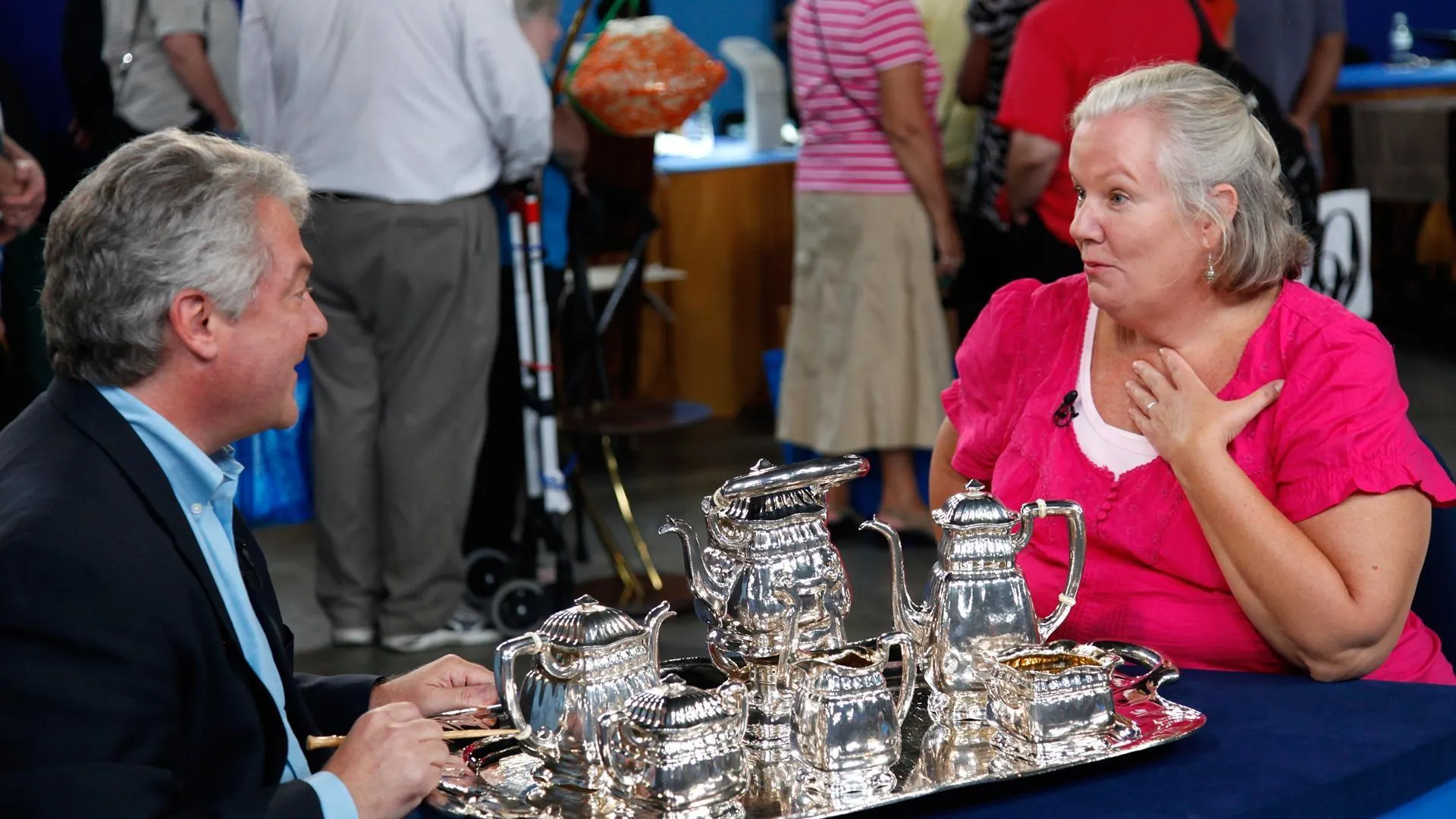GUEST: I inherited it from my father. My father was a lawyer in general practice in Connecticut. A woman came to him to handle a divorce for her, and he took the case and he got her her divorce. And when he sent her his bill, she said, "Oh, I don't really have any money, "but I have some valuable art, "and I am going to give you this beautiful Picasso plate, which is worth a great deal more than your bill." And he was an art lover. He never had it appraised or looked at by any authority. He believed her. He was quite taken by her. He always described her as "a classy lady." And whenever I see Picasso plates in a museum or in a book, I look and some of them look very similar to me. Many goats. But I really don't know anything about it.
APPRAISER: About how much do you think his bill might have been and about what year was that?
GUEST: Well, it was in the 1960s, and I would doubt it was more than $500 or so.
APPRAISER: This is a Picasso plate. And, interesting enough, I talked to another appraiser and he visited the pottery in France in the 1960s, and he said at that time he bought a couple of small pieces. And he said he probably didn't pay more than $10 or $20 each. This was very affordable when it was new. This pottery was made in southern France in a place called Vallauris by the Madoura Pottery. And it was made between 1947 and 1971. All of the pieces were designed by Picasso, but he didn't actually make them himself. He would design the plate and then the pottery would make it to his specifications. And these would have been made in series. They would have made a whole bunch of the same plate. In the hundreds, usually. Each one was hand decorated. So if we had another plate next to it, we would see, perhaps, the colors would vary a little bit. Or the way that they were painted on would vary somewhat. Another wonderful feature about this is the way that the design, the slip is raised. Very much like handmade pottery. It's gotten quite dirty over the years. If you washed this with some warm soapy water, it won't hurt it at all. Now, of course, they're not the same thing as an original painting, original drawing by Picasso because they were manufactured in some sense. But they were made in a limited amount of time and he had a very close connection to them. These were made within his lifetime. What we look for, first of all, is size. This is a really large size. There are some pieces that are quite small. This one has a lot of color. Some of them are just very monochromatic, but this has some splashes of blue, a nice splash of yellow. And this is figurative. He liked goats; that was a common theme that he used in a lot of things. So the goat is a great decorative appeal. Small pieces will start in the high hundreds, low thousands. But I talked with several other appraisers here and we believe that if this were sent to auction, it would sell for between $10,000 and $15,000.
GUEST: My goodness. I really am... I really am surprised. I'm sorry my father isn't here to hear this.











